|
Some builders (especially Cooper) will scrape a lot completely bare if you let them. Doing so makes it easier to get to the house to build it. To avoid this, tell the builder in advance that you will mark trees which you do not want removed and that you want to be present when the clearing is done.
Judy's builder, Jim Buss, helped by marking off with ribbon the entire area which had to be cleared for construction, then I put ribbons on the most desirable trees outside of that area, even though they should have been safe from clearing anyway. I also specified that all dead trees and and small brush should be removed.
|
August 26, 2007:
Marking the trees to be saved:
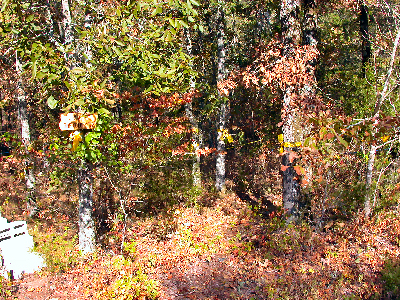

August 28, 2007:
Clearing begins:
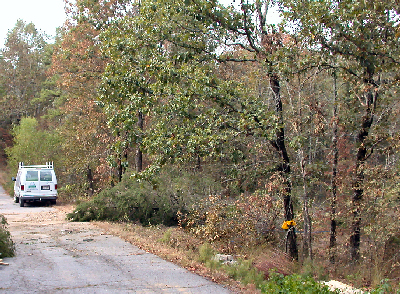
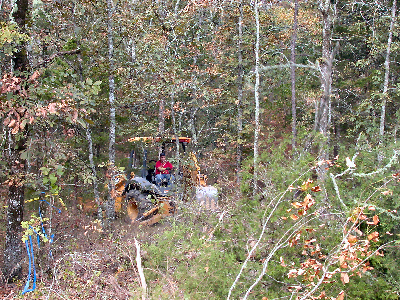
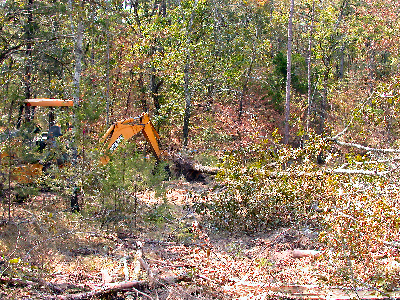
August 29, 2007:
Removing the downed trees:
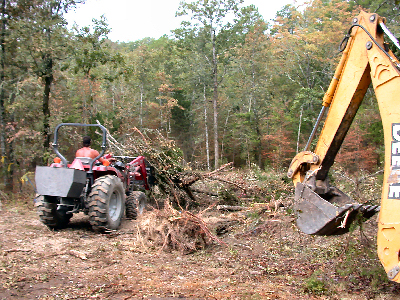
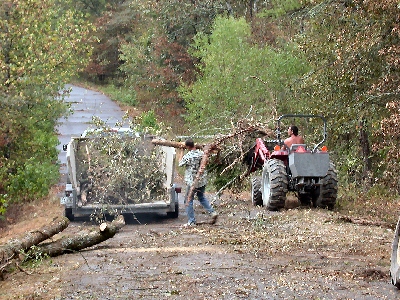
The cleared lot:
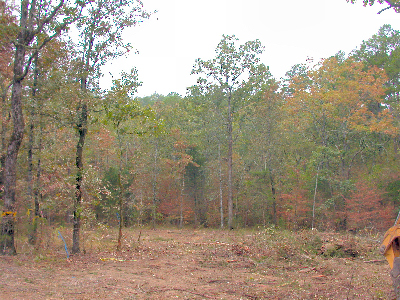
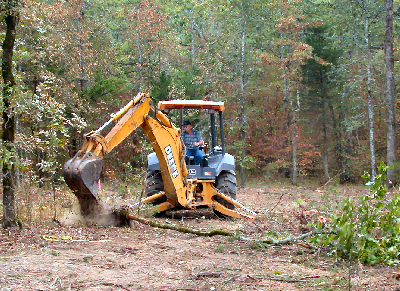
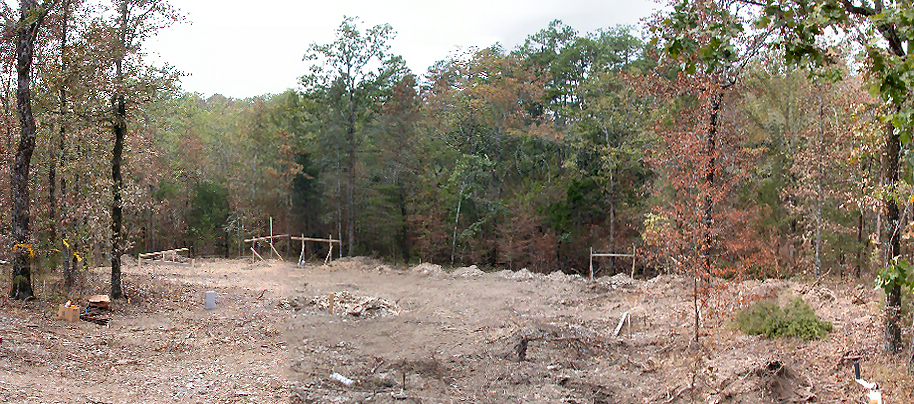
Looking out the driveway:
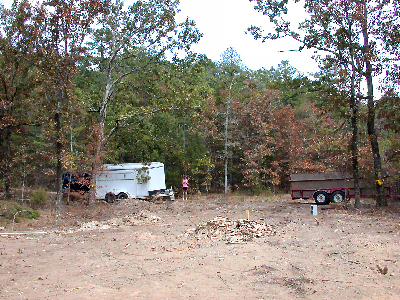
Protecting trees:
|
Trees which survive the clearing process can still be damaged or killed during the construction process.
Here are some of the dangers:
- Heavy trucks or equipment repeatedly running over the roots.
- Gravel and other building materials dumped on the roots, then scraped up by bulldozers.
- Utility companies digging up roots near the street and knocking over any trees which get in their way.
- Cement trucks dumping excess cement on top of tree roots. (My understanding is that cement trucks must be cleaned out on site or the left-over cement will harden in the truck mixer/tank before they can get back. But if it ends up left in your yard with a layer of dirt on top of it, good luck growing anything there. So be sure to specify in your contract that all concrete will be removed from the site.)
To insure that your most desirable trees are protected during construction, experts say that you should put plastic fencing around them. I foolishly did not put a fence around the large oak tree below because I saw no reason why heavy equipment would need to run over its roots, and they didn't, but I was ignorant of the other dangers listed above.
|
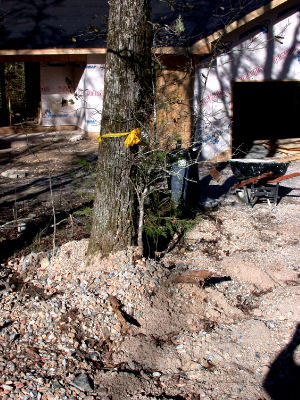
Click pictures to enlarge.
|
This tree, complete with its "please don't hurt me" ribbon around it, had two large roots ripped up by the utility companies. The roots are sticking up through what's left of a large pile of gravel for construction which was dumped on top of the tree's roots.
Because Judy was building in a largely undeveloped area, there was plenty of room across the street for gravel and stuff to be piled up for use, so fencing could have saved the trees from that particular abuse.
If heavy equipment absolutely must run over a tree's roots as its only reasonable access to the building site, then a fence will not slow them down, so consult with the builder before putting up fences and consult with an arborist for other ways to protect the roots from such traffic.
It is also unlikely that a utility company, which knocks down trees rather than go around them, is going to be stopped by a flimsy plastic fence. You might try calling the power, water, and sewer companies to see if anything can be done to protect tree roots, even though they may be in the utility company's right-of-way.
|
|
For example, in an undeveloped area such as Judy's, they may have been able to run the trenches down the opposite side of the street. (We can always hope.)
If your house is being built in a crowded subdivision, the good news is that likely no new trenches for utility lines will have to be dug alongside the street. The bad news is that there may be no other place for gravel and dirt, etc., to be dumped but on top of the roots of trees out by the street.
Also, trenches will still have to be cut to your home site from the main lines for power, water, and sewer lines, so tree roots can still be damaged then. If you put up plastic fencing, there is a chance that they may dig around the fence rather than going through it, unlike by the street where they have little leeway.
|
Click for:
|